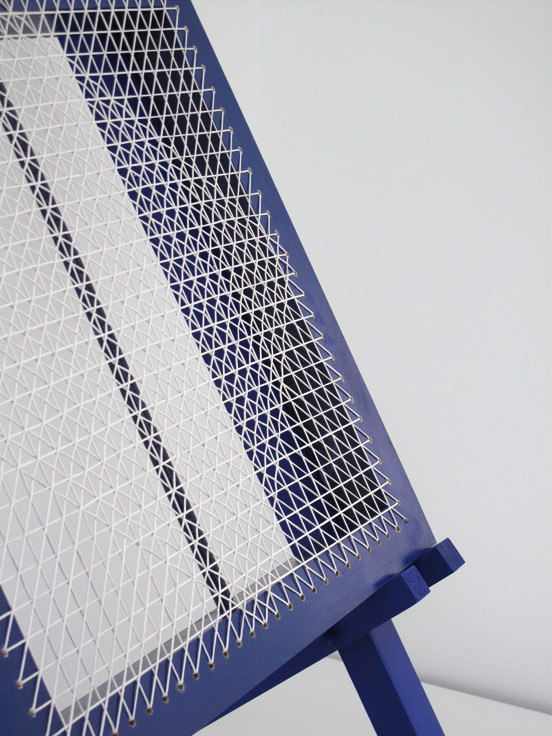Jenni Tischer
16 Jan - 16 Feb 2013
JENNI TISCHER
Second, Third, Fourth Maker
16 January - 16 February 2013
The term “second maker” was coined by the British philosopher Anthony Ashley-Cooper, 3rd Earl of Shaftesbury. In early 18th century, he referred to the poet as a creator after God. It is a notion that could easily be misunderstood as a biblical sacrilege, but it was, in fact, the beginning of the modern, autonomous author. In her examination of modern authorship, Jenni Tischer’s idea of the “third and fourth maker” shows that a work of art is created through a number of models, perspectives, decisions, prerequisites, constellations and possibilities. In short: a work of art must be thought of as a process.
By analysing the circumstances of production and constitution of artworks, Tischer reveals their basic structures. In order to understand how art acquires meaning, Jenni Tischer looks at questions of production, processes and materials. Her works raise questions about how art comes into existence, what processes take place, e.g. in the course of its creation and how materials are treated. The treatment of materials has been accorded greater value and made visible in its own right as a part of the artistic process.
Jenni Tischer’s objects are made of coloured pieces of wood, paper, fabric, yarn and glass. She builds frames, wires them with yarn, and weaves in illegible text fragments or knots together materials between two glass panes to build a collage. The frame, as a constitutional part of a picture, is itself mounted, wrapped in fabric or put together in such a way that it forms a spatial object. As a reference to diaphanous elements, glass holds together the individual materials of the objects to form a single construction. The use of these materials in particular creates flexible surface aesthetics which can be considered as models of picture concepts. Her minimalist design allows space for associations, imbuing the reduced, abstract objects with the topoi of art history. Thus the stuffed glass panes are reminiscent of brass instruments, like protractors, or disintegrating colour wheels.
Jenni Tischer’s works are exhibition models of a lyrical quality. They follow the rules of poetry. However, her works are not so much actual allusions as they are references to theoretical models of aesthetic constructions, or samples and material constructions elevated to works of art. The sample is a preliminary version and the model-like constructions emphasize the incompleteness and dynamics of the process of creating art – symbolised by a loose yarn in “Emblem (I)”.
Mirjam Wittmann / Mandana Taban (translation)
Second, Third, Fourth Maker
16 January - 16 February 2013
The term “second maker” was coined by the British philosopher Anthony Ashley-Cooper, 3rd Earl of Shaftesbury. In early 18th century, he referred to the poet as a creator after God. It is a notion that could easily be misunderstood as a biblical sacrilege, but it was, in fact, the beginning of the modern, autonomous author. In her examination of modern authorship, Jenni Tischer’s idea of the “third and fourth maker” shows that a work of art is created through a number of models, perspectives, decisions, prerequisites, constellations and possibilities. In short: a work of art must be thought of as a process.
By analysing the circumstances of production and constitution of artworks, Tischer reveals their basic structures. In order to understand how art acquires meaning, Jenni Tischer looks at questions of production, processes and materials. Her works raise questions about how art comes into existence, what processes take place, e.g. in the course of its creation and how materials are treated. The treatment of materials has been accorded greater value and made visible in its own right as a part of the artistic process.
Jenni Tischer’s objects are made of coloured pieces of wood, paper, fabric, yarn and glass. She builds frames, wires them with yarn, and weaves in illegible text fragments or knots together materials between two glass panes to build a collage. The frame, as a constitutional part of a picture, is itself mounted, wrapped in fabric or put together in such a way that it forms a spatial object. As a reference to diaphanous elements, glass holds together the individual materials of the objects to form a single construction. The use of these materials in particular creates flexible surface aesthetics which can be considered as models of picture concepts. Her minimalist design allows space for associations, imbuing the reduced, abstract objects with the topoi of art history. Thus the stuffed glass panes are reminiscent of brass instruments, like protractors, or disintegrating colour wheels.
Jenni Tischer’s works are exhibition models of a lyrical quality. They follow the rules of poetry. However, her works are not so much actual allusions as they are references to theoretical models of aesthetic constructions, or samples and material constructions elevated to works of art. The sample is a preliminary version and the model-like constructions emphasize the incompleteness and dynamics of the process of creating art – symbolised by a loose yarn in “Emblem (I)”.
Mirjam Wittmann / Mandana Taban (translation)

